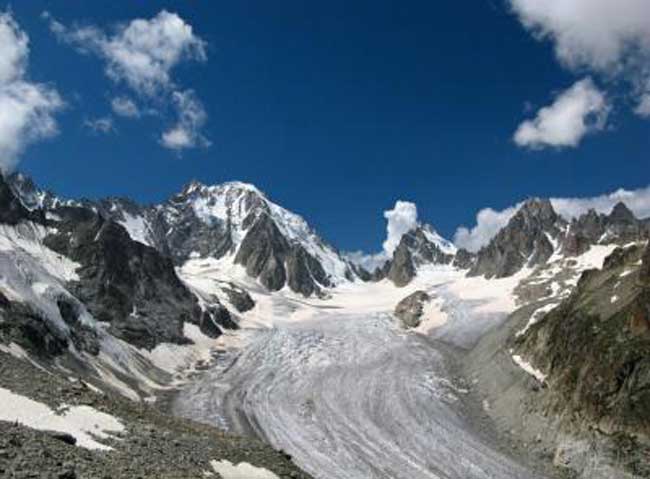Melting Glaciers Behind Mysterious Increase in Pollution

A mysterious increase in pollution deposits in recent years, despite reductions in the production of the pollutants, may have a solution. Alpine glaciers have been melting rapidly since the 1990s, and now scientists think pollution collected in the ice in decades past is flowing at an increased pace into lakes and rivers today. Previous research had documented increases in organic pollutants in sediment from certain lakes since the 1990s, despite decreased use of those compounds in pesticides, electric equipment, paints and other products. In the new study, Christian Bogdal at the Swiss Institute for Chemical and Bioengineering and colleagues focused on organic pollutants in sediment from a model body of water (glacier-fed Lake Oberaar in the Bernese Alps, Switzerland) testing for things like dioxins, PCBs, organochlorine pesticides and synthetic musk fragrances. They found that while contamination decreased to low levels in the 1980s and 1990s, presumably due to tougher regulations and improvements in products, since the late 1990s flow of all of these pollutants into the lake has increased sharply. The flow of organochlorines into the lake today is similar to or even higher than in the 1960s and 1970s, the report states. The study attributed the most recent spike in the flow of pollutants into Lake Oberaar to the accelerated release of organic chemicals from melting Alpine glaciers, where contaminants were deposited earlier and preserved over decades. "Considering ongoing global warming and accelerated massive glacial melting predicted for the future, our study indicates the potential for environmental impacts due to pollutants delivered into pristine mountainous areas," Bogdal said. The results will be detailed in the Nov. 1 issue of ACS' Environmental Science & Technology.
- Video: The Science of Climate Change
- Top 10 Surprising Results of Global Warming
- The Science of Pollution
Sign up for the Live Science daily newsletter now
Get the world’s most fascinating discoveries delivered straight to your inbox.
Scientists reveal signs of crucial life-sustaining process on Mars: 'I knew right away how important this discovery was'
'Useless' female organ discovered over a century ago may actually support ovaries, study finds
A mysterious, 100-year solar cycle may have just restarted — and it could mean decades of dangerous space weather










